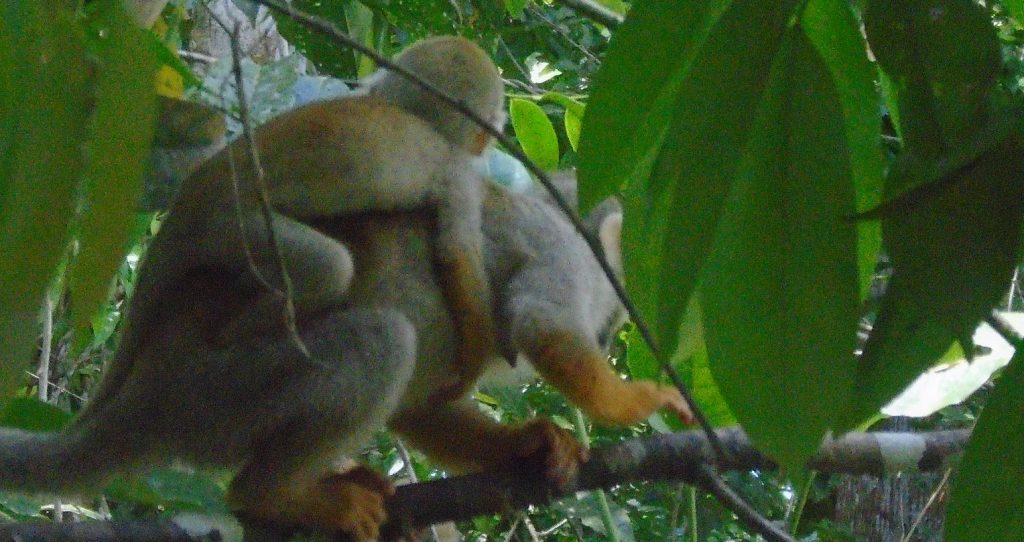
The jungle walk was familiar enough to make me long for the forests of home and different enough that I knew I was not at home anymore.
The forest here is wet, literally dripping with dew and humidity all the time. The ground vegetation is thick, although that may be because this was cut-over. I understand that in the true triple canopy forest, which I don’t think I have ever really seen, it is so dark on the forest floor that not much grows. The forest soil here is not fertile and it there is little organic material. It is all quickly recycled into growing plants. It is a different sort of forest from those I know. I feel connected with the forests back home. Here I am clearly alien. I recognize that this is a wonderful, complex and diverse ecosystem. Maybe that just overwhelms me.

Maybe it is because it is a dangerous place. There are snakes and bugs around that can poison you. If you get stuck in the jungle at night, never sleep on the group. That is why local Indians always use hammocks. If you lay down on the ground for the night, you are likely to still be lying there the next morning, just no longer alive.
We didn’t see any big animals or really animals at all. Many of the animals are nocturnal and all the animals are good at not being seen. Life is dangerous and short for the forest animals here. Beyond that, the soil is not very fertile, so there are not rich supplies of food. This poverty is especially acute on the Rio Negro, since (as mentioned) the river does not have many insects, which form the base of the food pyramid. The nearby Rio Solimões is coffee brown, full of silt and nutrients, and so full of bugs and fish. Tourists like it less because of the bugs and the mud, but it is a more living river.
Francisco, the guide, said that there were jaguars around but not very many. This is good, since jaguars are dangerous. They will attack and kill people and you don’t see them coming. He wears a jaguar tooth around his neck and he showed it around to emphasize his point. Jaguars are stealth hunters. They hide or sneak up and then jump on their prey from behind. They go for the jugular. When they get a hold, they just hold on until the animal, or human, passes out from loss of blood. They are beautiful creatures, but nasty. I recall seeing them at the jaguar sanctuary safely behind a fence. I am glad that we didn’t run into any w/o a fence.

That long brown thing in the picture is an ant nest. Maybe it would be more appropriate to call it an ant hive. The outside was crawling with ants. Francisco squashed a few and rubbed them on his hands. He told us that the native Indians would do that and rub it all over their bodies to mask their scent when hunting. The local Indians are also stealth hunters. They hide or sneak up on their prey and then dispatch them with an arrow or poison dart. Neither has much range in the woods, so they need to get close, close enough to smell the animal and be smelled. The ant juice makes hunting like this practical.
We didn’t see any Indians in the wild. They are not very numerous and those that still live traditionally are protected and contact with them limited. Meeting “wild” Indians is potentially hazardous to all involved. While I was there, I read an article about three people killed by semi-wild Indians. Evidently one of them worked for the electric company and made himself unpopular by trying to collect bills. He was marked for death, but he caught a ride with a couple other people, thereby dooming them too. Those are situations I cannot predict so prefer to avoid.
BTW – walking is not the way you usually get around in the jungle. It is difficult to walk most places. With all the water, boat is the best way to go. Alex and I paddled a little. I will show pictures in the next post.
